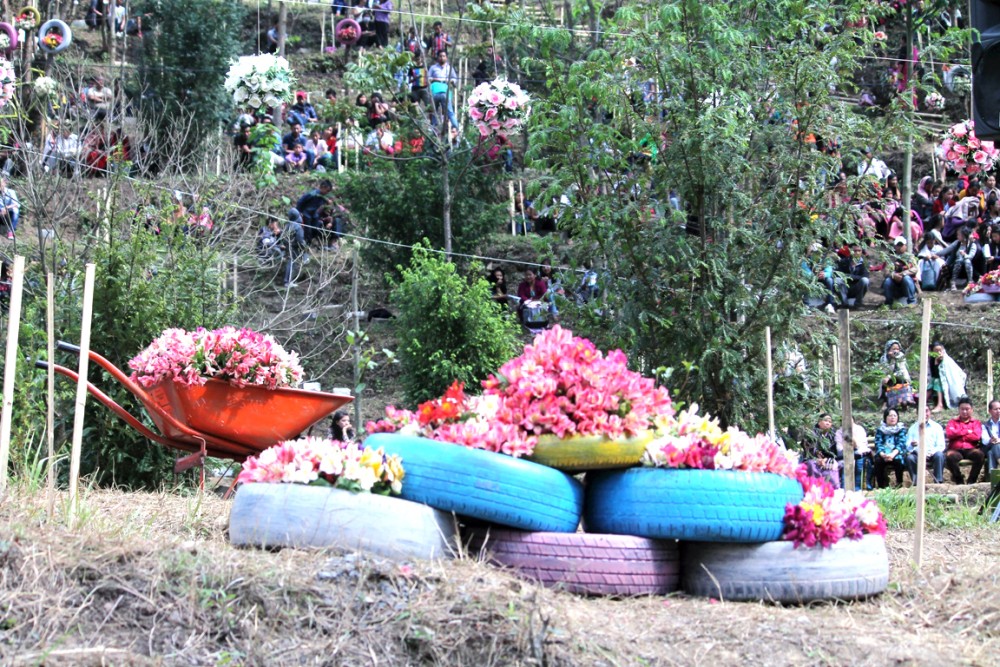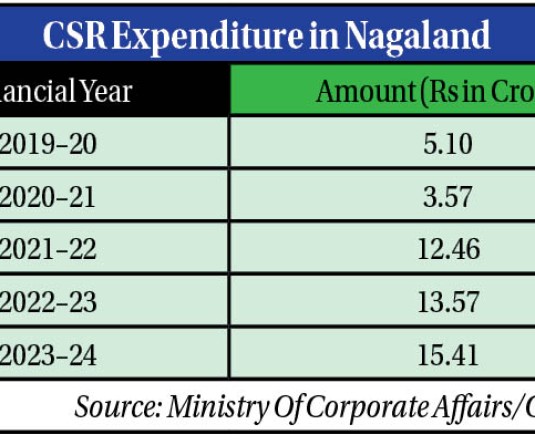A Flower Festival is underway from April 9-11 at Phukhro, Mao Gate. (Morung Photo)

Morung Express News
Mao Gate | April 10
It started with an idea suggested by a group of young people at Songsong village who proposed a flower show and competition at Mao Gate in 2015. Making it a Flower Festival, around 50 flower growers participated on October 11, 2015.
This year the idea turned into a 3 day festival starting from April 9 till 11 at Pfukhro, Mao Gate, with over 60 participants and hundreds of visitors from Senapati district. Under the theme, ‘Colours of Spring,’ the Festival this year has been jointly organized by the Senapati District Administration and Mao Flower Growers Association in collaboration with the Department of Horticulture and Soil Conservation, Government of Manipur (GoM) and Department of Commerce and Industries, GoM. The organizers stated that the Festival has been commemorated to celebrate “a concept nurtured by the people with a collective desire to preserve, promote and develop the gift of nature endowed upon the land found a common platform together.”
Flowers have an economic value for the people in this area, said Jacintha Lazarus, DC, Senapati during the inaugural event.
Mao Gate is around 32 km from Kohima and 100 km from Imphal. The border town, a transit point for travelers from Nagaland and Manipur, is set to become one of the most economically sustaining areas with its flower business.
The Flower Festival maybe a new concept, but growing flowers and making a living out of it has been a matter of economic importance for the Mao Nagas for more than ten years. Many villagers, especially women, have economically empowered themselves through the flower business. “We really like flowers,” said Adaphro, who has recently taken up the flower business, also mentioning that most of the Mao Naga villages (there are around 37 Mao villages) take up flower growing for economic sustenance. Adaphro also mentioned that the flower business has been going on for more than 10 years and the villagers have been growing flowers without any support from the government. Many college students have also taken up the flower business to save money for their higher education, added Adaphro.
For Lophro, a young teacher, growing flowers was just a hobby which turned out to be lucrative business with high demands from Kohima and Imphal. Flowers are grown throughout the year but the peak seasons are mostly winter, during the wedding season. However, the demand for flowers does not fall too short throughout the year. Lophro, who grows flowers in her village Rabunamai, also mentioned that the flowers that are sold the most are Geraniums and Alstroemerias. The annual income amounts to 2 lakh or more for each grower.
The inaugural event witnessed both local visitors from Mao villages as well as visitors from Kohima, Imphal and neighboring districts. The highest number of participants is women, showcasing the numerous varieties and rare breeds of flowers such as geraniums, orchids, chrysanthemum, alstroemeria, daisy, carnation, lobelia, lupin, begonia, rhododendron, hydrangea, as well as cactuses and succulents.
During the inaugural event of the Flower Festival, V. Shanmuganathan, Governor of Manipur graced the occasion as Chief Guest and O Nabakishore Singh, IAS, Chief Secretary of Manipur was the Guest of Honor.
This is also the first time, in a very long time, that a Governor and a Chief Secretary have attended an event and visited the Mao Gate which borders Nagaland, said Athikho, an Economics Lecturer, further explaining that often the borders and peripheries of the State are neglected.
The Governor in his address stressed on the importance of plants and flowers which, according to him, have the potential to combat global warming. He also asserted that the Festival is viable for a tourist destination. Chief Secretary, ON Singh, urged the flower growers to promote the business on a larger scale by meeting requirements such as capital, land and technology.
The organizers believe that the Festival has opened a “new chapter to flower growers and proprietors for future sustainability and growth of the flower market.” With the flowers being marketed in neighboring states and beyond, the Festival envisions a higher common good.






